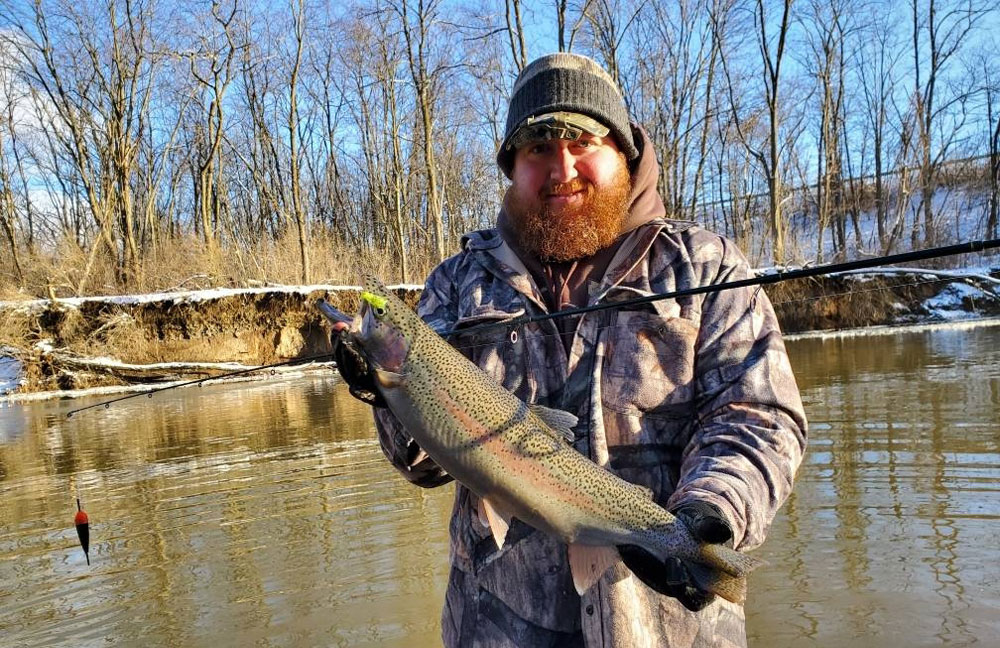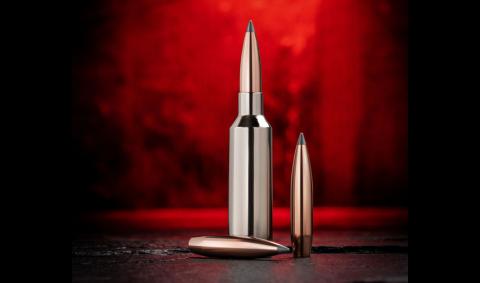provided by John E. Phillips
Steven Reinhold of Nova, Ohio, has been on the Mossy Oak ProStaff for 15 years and has a TV show on the Hunt Channel titled, “True Life Hunting Adventures,” on My Outdoor TV. Reinhold started out in the TV business in 2008. “I eventually dropped out of that business because my children were growing up and going to college, and I didn’t want to miss any family time,” Reinhold explains. Then in 2018, Reinhold’s older son, Mason Reinhold, wanted to get back into the TV business, so they cranked it up then.
When someone asks me about our fishing TV shows, they usually ask, “How do you self-film a fishing show?” We film quite a bit of fishing on Lake Erie. Last year, my son, Mason, went shark fishing on the ocean, and he used a LIDCAM to film that shark-fishing show. We also use a GoPro because it has a submersible case that we can use with a pole to film the fish underwater. The advantage to the GoPro Hero4 is a 4K camera with good video footage and an arm we use to film the sharks coming into the bait. You can get a quality GoPro camera online for $89 - $240. Often a $240 camera will come with quite a few accessories. We can film the shark showing underwater footage and eating the bait getting hooked. With the LIDCAM you’re getting the above-water view of sharks in action.

Self-filming fishing is a different animal than self-filming hunting. The boat is moving more than the movement you’ll have while hunting. Since dropping a camera in the water is easy, I’d rather lose an $89 LIDCAM than a $1,500 Canon camera. We also use the same camera when we’re walleye fishing on Lake Erie where the water’s cloudier than it is out in the ocean. We mainly use the underwater GoPro as we are bringing the walleye in toward the net and then netting the walleye. We will use the LIDCAM to show the rod bending and the walleye coming in just under the surface. We also have our big camera that we don’t use all the time. But we get B-roll with our Canon camera. B-roll is video of the angler before and after the fish is caught and video to supplement the story to help the viewer relate to the place, the time and other action happening around the angler.
We also use the Canon Vixia, that I mentioned earlier, with the Scorpion Arm when bowfishing. When we went to Texas this past summer, I filmed for 2 hours an entire show with my Canon Vixia and Scorpion Arm.
One of the big advantages of self-videoing is you don’t have to spend much money to get good footage with several small cameras. Many outdoorsmen who are thinking about self-videoing think they have to buy all the latest and greatest video cameras to film with, but that’s just not true. All you need is a camera with an SD card. You can plug that SD card into your laptop and into your home computer, and you can break-down segments that you want to use in your video. When you turn off the camera, the footage is already in segments. Then, you can pull the segments you want to use from your video when you’re editing.
Another question I’m also asked is, “What kind of editing equipment do you have?” I have an editor, Mark Guy, who handles that for me. He takes out footage and crafts a 28-minute show that has commercials in it. One advantage we have is that there are three videographers self-filming hunts throughout the year – my son, Mason, our videographer and myself. We really got lucky when we found our photographer Tony Artino. These young people now know so much about editing video that they can do it better and faster than I can. They do so much editing for YouTube for themselves that there are an abundance of good editors.
Today there is a tremendous number of outdoor shows on YouTube – perhaps even 2,000 different people shooting hunting videos and putting them on YouTube. In the past, there may have been only two to 10 outdoor TV shows on TV. But with the growth of YouTube and social media, and better quality video cameras costing less money and easier to film with for social platforms – filming has become so simple and inexpensive that almost anyone can do it. My group had an opportunity at one time to go on an outdoor TV channel on TV. But as I watched the growth of social media, I saw that many people were watching shows on YouTube on their phones, on their tablets or on their computers. Those devices could be carried with them anywhere they went. So, anytime they’ve had to wait somewhere, or they’re driving or riding, they can watch outdoor shows on these hand-held devices. Our shows also run six days a week. The last numbers we got from the Hunt Channel and Outdoor TV, we had 190,000 hits every time one of our show was aired.
Mossy Oak has been one of our sponsors for a couple of years, since we’ve started our show back in 2018. To see our show, go to the Hunt Channel and see our video library there. To go online, type in the Hunt Channel, and once the channel comes up, type in True Life Hunting Adventures. Our new season began at the end of December and will be on six nights a week. Our show runs a full year.



























